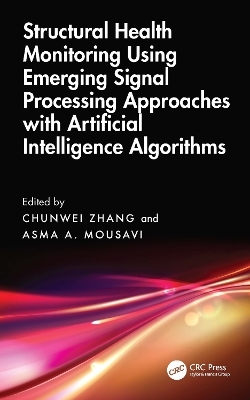
Structural Health Monitoring Using Emerging Signal Processing Approaches with Artificial Intelligence Algorithms
CRC Press (Verlag)
978-1-032-80613-6 (ISBN)
Structural health monitoring is a powerful tool across civil, mechanical, automotive, and aerospace engineering, allowing the assessment and measurement of physical parameters in real time. Processing changes in the vibration signals of a dynamic system can detect, locate, and quantify any damage existing in the system. This book presents a comprehensive state‑of‑the‑art review of the applications in time, frequency, and time‑frequency domains of signal‑processing techniques for damage perception, localization, and quantification in various structural systems.
Experimental investigations are illustrated, including the development of a set of damage indices based on the signal features extracted through various signal‑processing techniques to evaluate sensitivity in damage identification. Chapters summarize the application of the Hilbert–Huang transform based on three decomposition methods such as empirical mode decomposition, ensemble empirical mode decomposition, and complete ensemble empirical mode decomposition with adaptive noise. Also, the chapters assess the performance and sensitivity of different approaches, including multiple signal classification and empirical wavelet transform techniques in damage detection and quantification. Artificial neural networks for automated damage identification are introduced.
This book suits students, engineers, and researchers who are investigating structural health monitoring, signal processing, and damage identification of structures.
Chunwei Zhang is a Chair Distinguished Professor at Shenyang University of Technology. He is the Founding Director of the Multidisciplinary Center for Infrastructure Engineering (MCIE) at Shenyang University of Technology, and of the Structural Vibration Control (SVC) Group at Qingdao University of Technology, China. His research achievement and worldwide impact have been highly recognized by the international academia society, as evidenced by the continuous inclusions into the prestigious rankings, such as the Clarivate Highly Cited Researcher, Elsevier Most Cited Chinese Researcher, and Stanford World Top 2% Scientists, among others. Apart from publications, his inventions have been implemented in the engineering practice as evidenced by the active control system for the Canton Tower structure. He is also a commended author of CRC Press published books and proceedings. Asma A. Mousavi is a researcher at South China University of Technology. .
1. Introduction. 2. Methodology and Approaches. 3. Implementation of the Proposed Approaches in Structural Damage Detection and Quantification. 4. Implementation of the Proposed Approaches in Structural Damage Localization. 5. Experimental Verification of the Proposed Artificial Neural Network Aided Approaches in Structural Damage Identification. 6. Conclusions.
| Erscheinungsdatum | 10.10.2024 |
|---|---|
| Zusatzinfo | 7 Tables, black and white; 117 Line drawings, color; 11 Line drawings, black and white; 37 Halftones, color; 3 Halftones, black and white; 154 Illustrations, color; 14 Illustrations, black and white |
| Verlagsort | London |
| Sprache | englisch |
| Maße | 156 x 234 mm |
| Gewicht | 610 g |
| Themenwelt | Technik ► Bauwesen |
| Technik ► Elektrotechnik / Energietechnik | |
| Technik ► Maschinenbau | |
| Technik ► Nachrichtentechnik | |
| Technik ► Umwelttechnik / Biotechnologie | |
| ISBN-10 | 1-032-80613-3 / 1032806133 |
| ISBN-13 | 978-1-032-80613-6 / 9781032806136 |
| Zustand | Neuware |
| Informationen gemäß Produktsicherheitsverordnung (GPSR) | |
| Haben Sie eine Frage zum Produkt? |
aus dem Bereich


